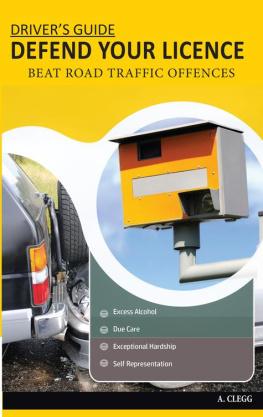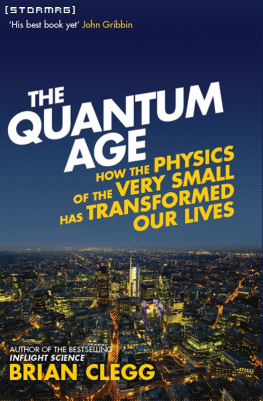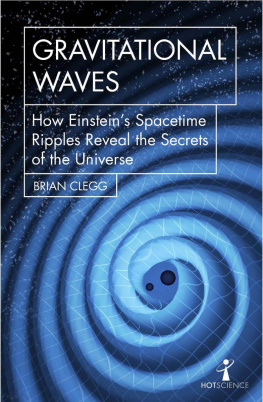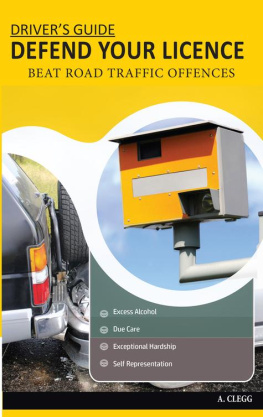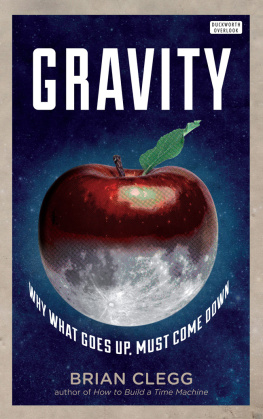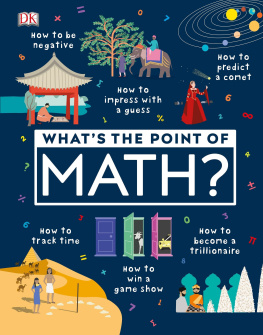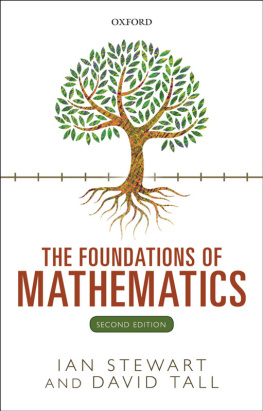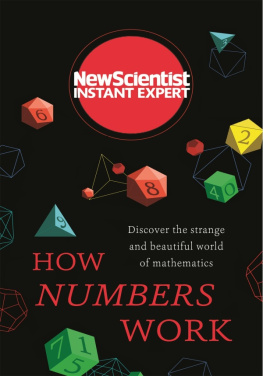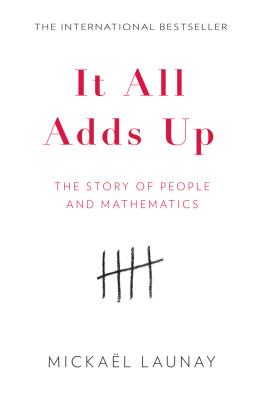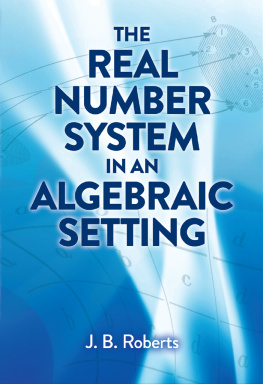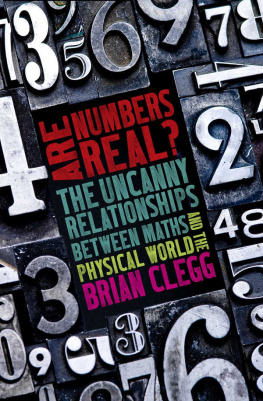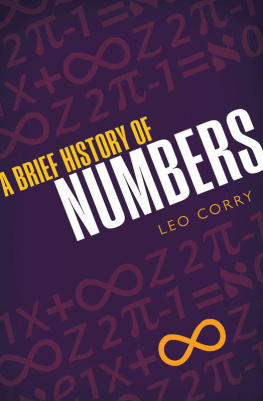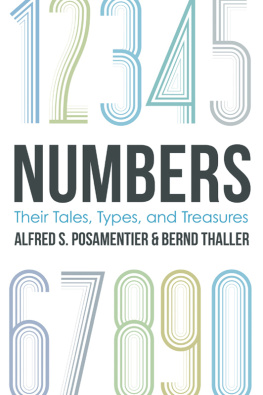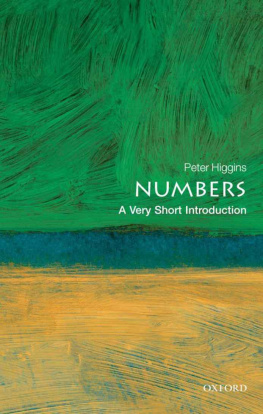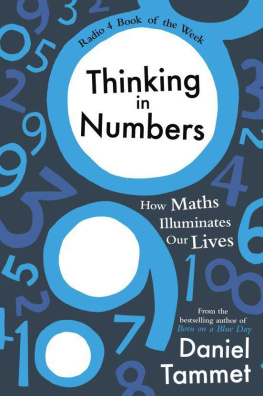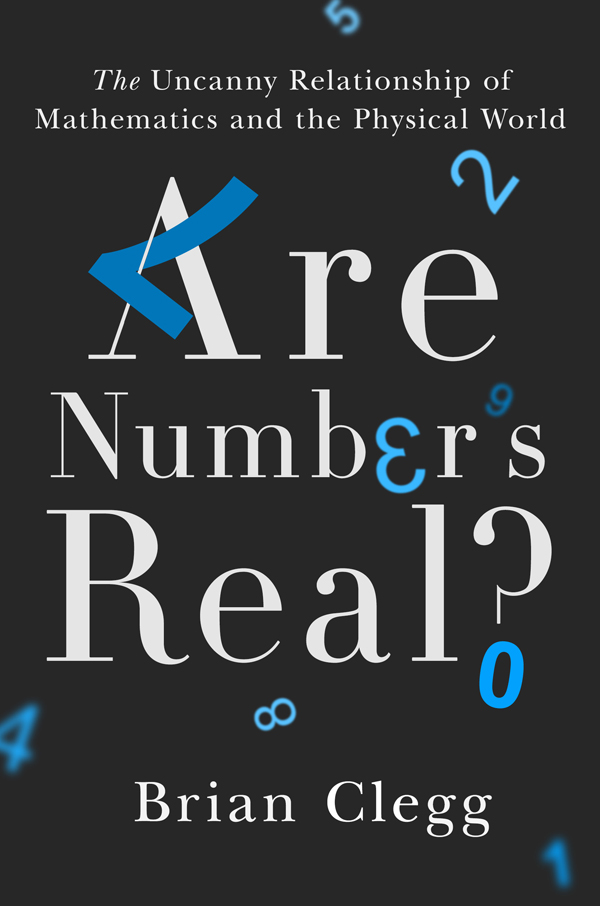Contents
Guide

The author and publisher have provided this e-book to you for your personal use only. You may not make this e-book publicly available in any way. Copyright infringement is against the law. If you believe the copy of this e-book you are reading infringes on the authors copyright, please notify the publisher at: us.macmillanusa.com/piracy.
For Gillian, Rebecca, and Chelsea

BRIAN CLEGG is the author of Ten Billion Tomorrows, Final Frontier, Extra Sensory, Gravity, How to Build a Time Machine, Armageddon Science, Before the Big Bang, Upgrade Me , and The God Effect among others. He holds a physics degree from Cambridge and has written regular columns, features, and reviews for numerous magazines. He lives in Wiltshire, England, with his wife and two children. You can sign up for email updates here.

As far as the laws of mathematics refer to reality, they are not certain; and as far as they are certain, they do not refer to reality.
Albert Einstein, Sidelights on Relativity (1922)
Thanks to all those at St. Martins Press who have made this book possible, including Michael Homler and Lauren Jablonski. Thanks also to the many people who have helped me muse over the relationship of mathematics and science, notably Professor Adrian Moore of Oxford University, who was inspired to go into philosophy by the same math teacher who spurred me on to take an interest in mathematics and infinity, Neil Sheldon of the Manchester Grammar School.
Our journey in this book will explore a question that is fundamentally important to scientistsand for that matter the rest of us. Yet its a question that most people, including scientists, rarely give a moments thought to. Are numbers, and is the wider concept of mathematics, real?
At first glance, this seems a crazy question to devote thirty seconds to, let alone a whole book. Of course numbers are real. You only have to take a look at my bank statement. It contains a whole load of numbers, most of which seem to be negative as cash flows out of the account. And as for mathematics, we all had plenty of homework when we were at school, and that seemed real enough at the time. But here Im using a different definition of real. It is essential to gain a better understanding of science to discover whether numbers and mathematics form real entities, whether they have a factual existence in the universe. Would numbers exist without people to think about them, or are they just valuable human inventions, the imaginary inhabitants of a useful fantasy world?
We know that it is perfectly possible to devise mathematics that does not have any underlying link with reality. Mathematicians do this all the time. Math, in the end, provides nothing more or less than a set of rules that are used to get from a starting point to an outcome. We can define those rules in such a way that they happen to match what we observe in the real world, or we can make them as bizarrely and wonderfully different from reality as we like. And some mathematicians delight in taking such fantasy journeys into alternative universes.
To take a simple example, the real world has three spatial dimensions (unless string theory, the attempt in physics to combine gravity and the other forces of nature that requires 9- or 10-dimensional space, has it rightsee )but a mathematician is just as comfortable working with 1, 2, 4, 79, or 5,000 dimensions. Mathematicians delight in the existence of a mathematical construct called the Monster group, which is a group of ways you could rotate things if space had 196,883 dimensions. When working with the Monster, to quote Dorothy in The Wizard of Oz, Toto, Ive a feeling were not in Kansas anymore.
For that matter, when mathematicians work on something as everyday as the shape of knots, they make their own definition of what a knot is that bears no resemblance to the things we use to tie up shoelaces. For reasons of practical convenience, the mathematicians set a rule that both ends of the string they are knotting must be joined together, making a continuous loop. We know real-world knots arent like thateven mathematicians (admittedly not the most worldly people) know thisbut they dont care, because thats the rule that they chose to use.
Similarly we could devise a mathematical system in which 2 + 2 = 5. It doesnt work with real-world objects, but there is no reason why it cant with a number system if we define it to work that way. Although not so extreme, there is a commonly used mathematical system where we can define 2 + 2 to be 0 or 1. Its called clock arithmetic. Instead of numbers adding constantly, they progress like the numbers on a clock, resetting to 0 at a specific value. Admittedly these do have a parallel in the world. We use clock arithmetic, as the name suggests, on analog clocks. On a twelve-hour clock, for instance, 9 + 6 = 3. Such arithmetic provides a better representation of anything cyclical than traditional counting. What this illustrates is both the arbitrariness of mathematics and how we have to be careful about definitions. The number 9 on a clock is not the same thing as the number 9 when we are counting goats, they just have some things in common, and use the same symbol.
To turn it around and consider things from the real-world viewpoint, it is possible to go through life without ever encountering much in the way of mathematics. For most of human existence, the vast majority of human beings have managed to do so. Some very basic arithmetic seems to be preprogrammed. Both dogs and babies react with surprise when, for instance, one item is put into a bowl, then another, but when they then look in the bowl, there is only one object, because the second was palmed. 1 + 1 = 2 seems a pretty low-level mammal programming, and is without doubt useful in calculating the odds when faced with more than one enemy to fight. Most of the rest of mathematics is a late add-on to our capabilities, but one that has proved extremely useful.
Without mathematics, hardly any of the science and technology that is essential for todays civilization would be produced. Math threads through our lives, from everyday functions like transactions in a store, to understanding the significance of the distribution of a disease or the outcome of an election. Because it is important that we have a feel for a discipline that is so useful in understanding the underlying structures and principles of the world around us and predicting its behavior, its a shame that so many of us find getting into mathematics remarkably difficult, or even painfulsomething to be avoided if at all possible. A 2012 British article for World Math Day commented:
We know too that many adults simply dont like maths and dont see the point of it. Many have no qualms about saying so. Being no good at maths carries little stigma. That tends not to be the case in other parts of the world. Negative attitudes to maths set in early in the UKsome would say between the ages of seven and nine, when many childrens interest and attainment dip, in most cases never to return. They switch off and decide maths is something to be borne until the moment they can give it upfor ever. The process is then cyclical, with parents (and in some casesdare I say?teachers) passing on their own lack of enthusiasm and confidence to the next generation.


